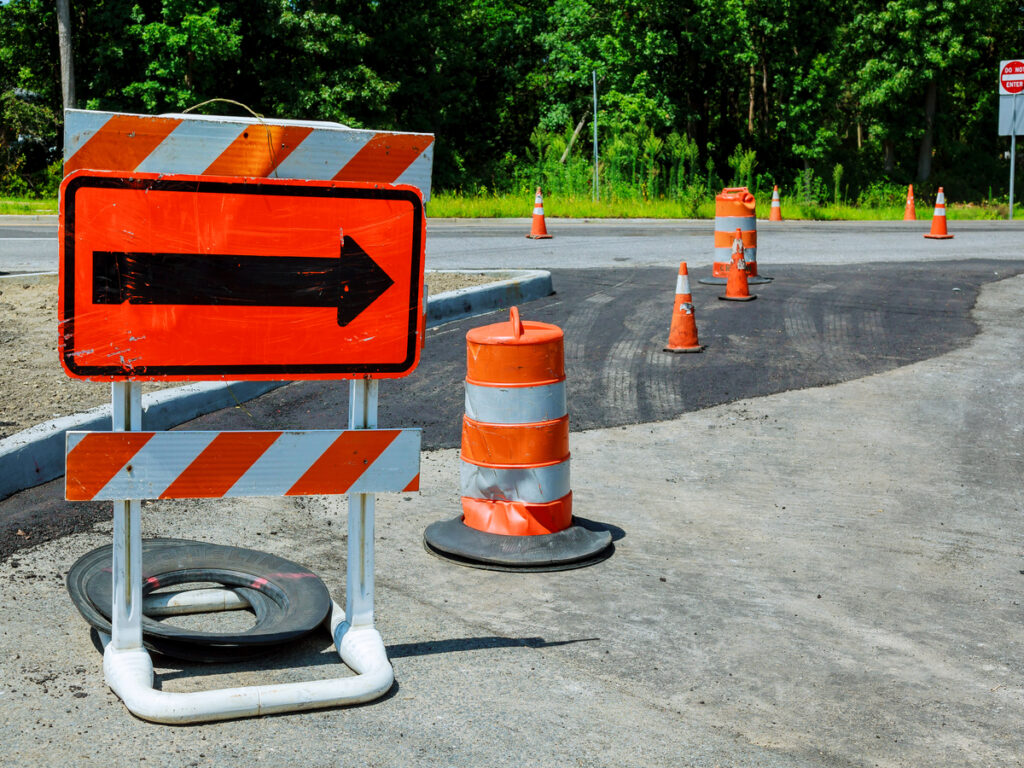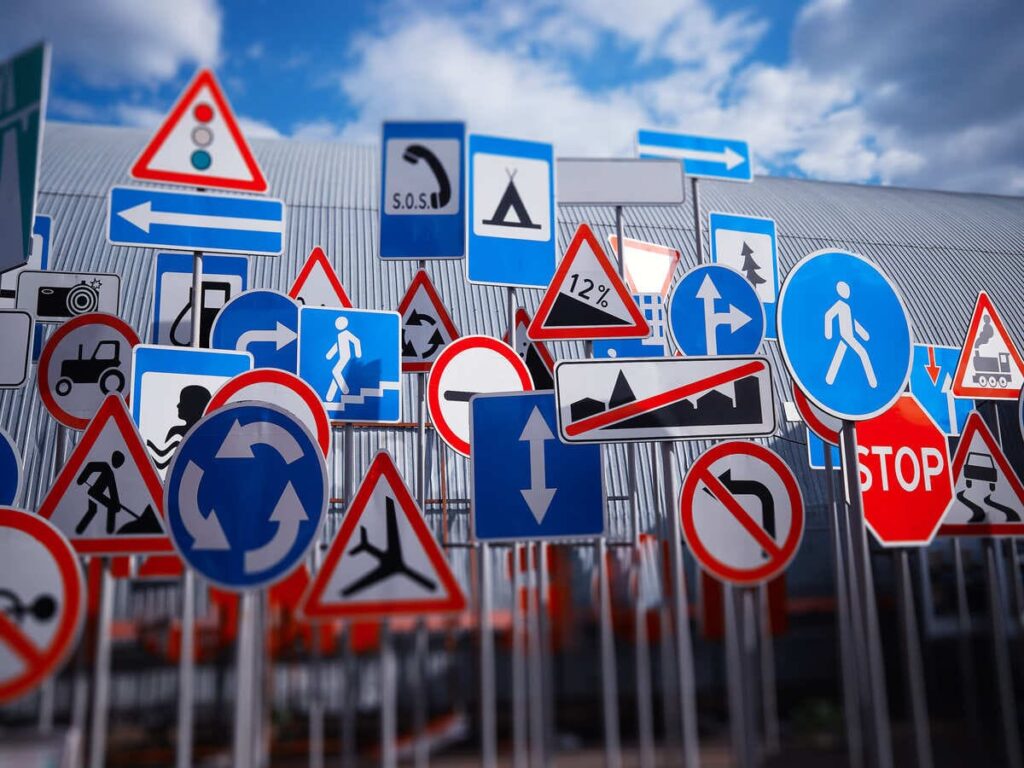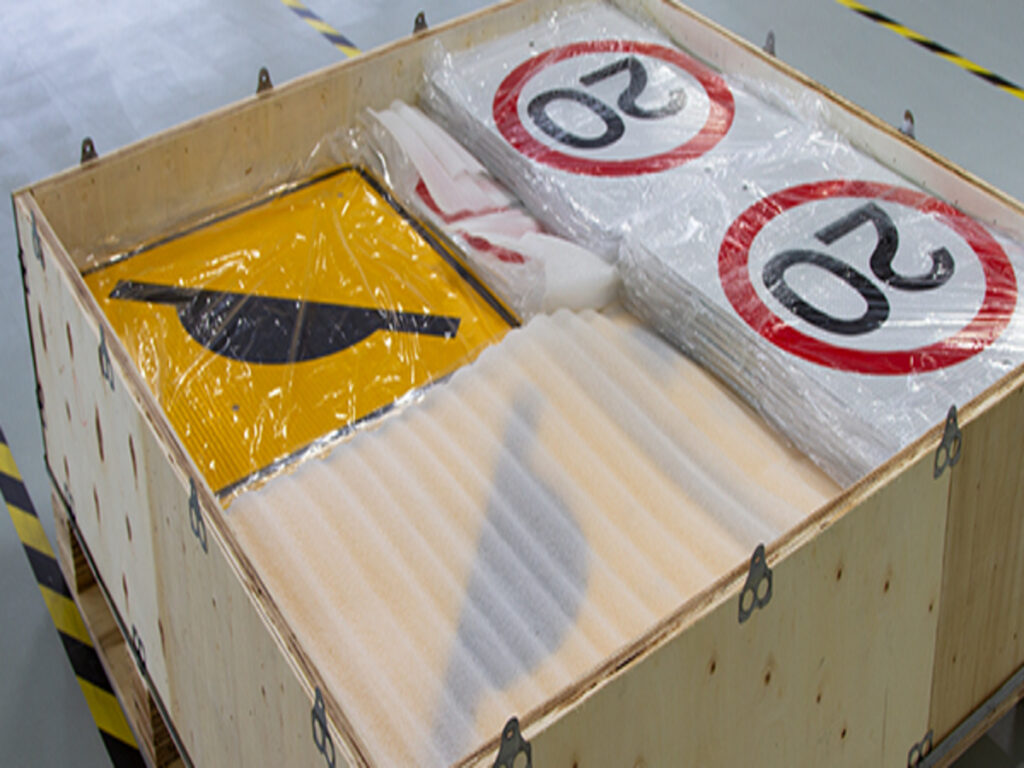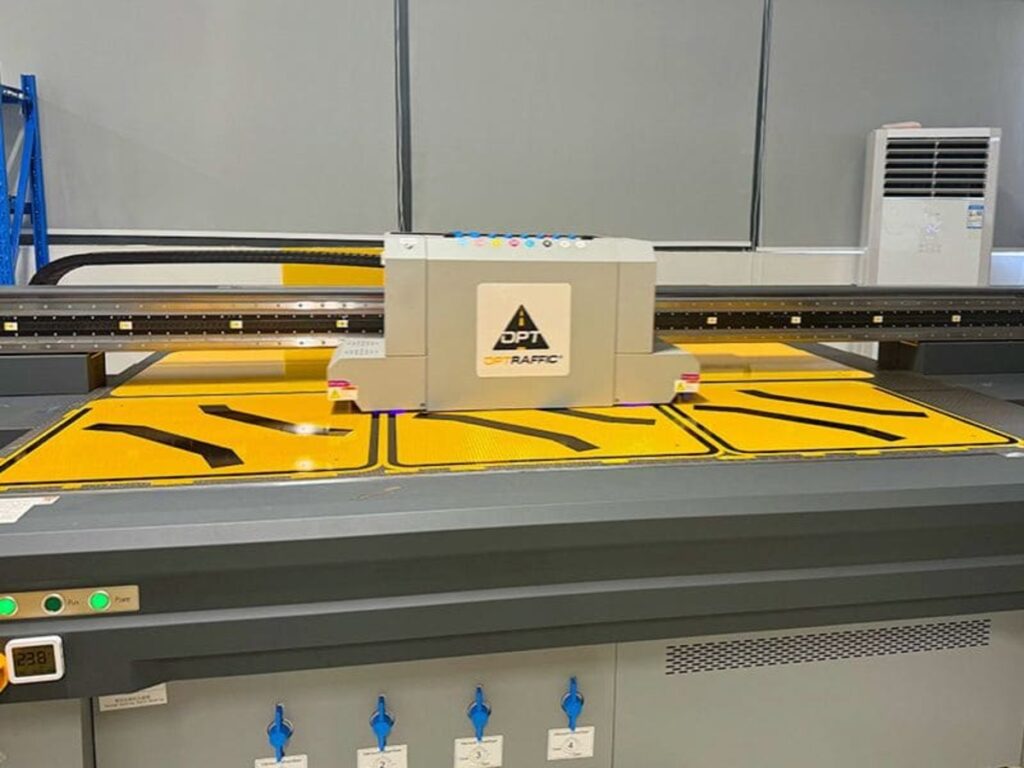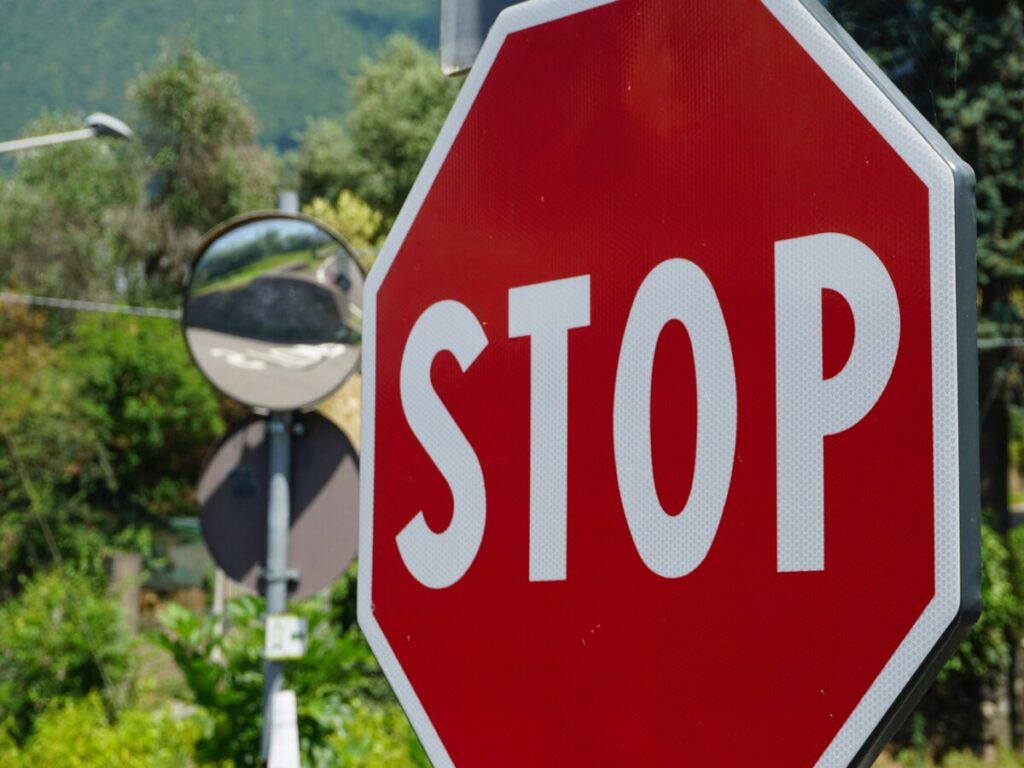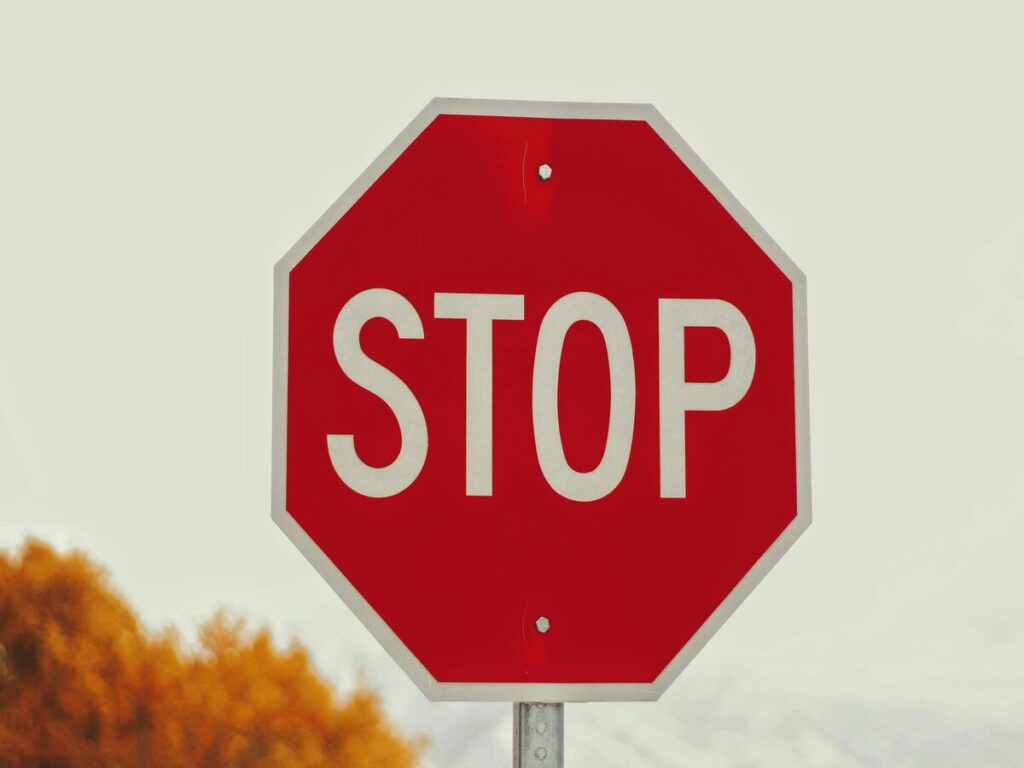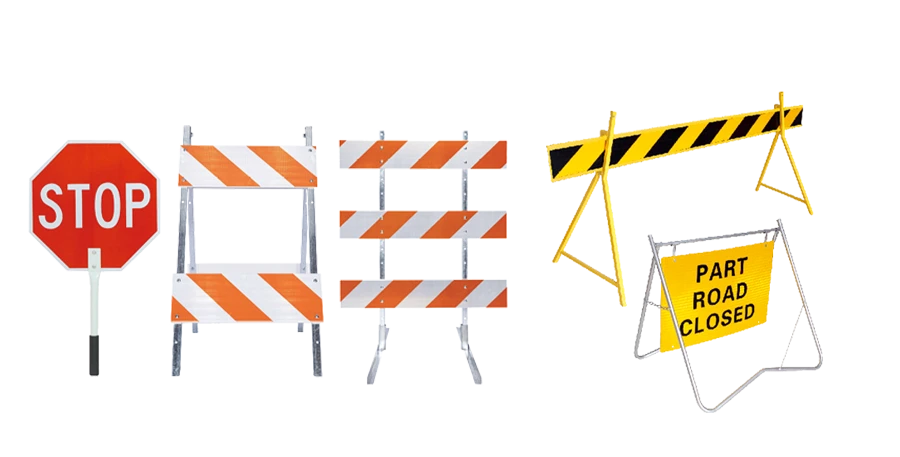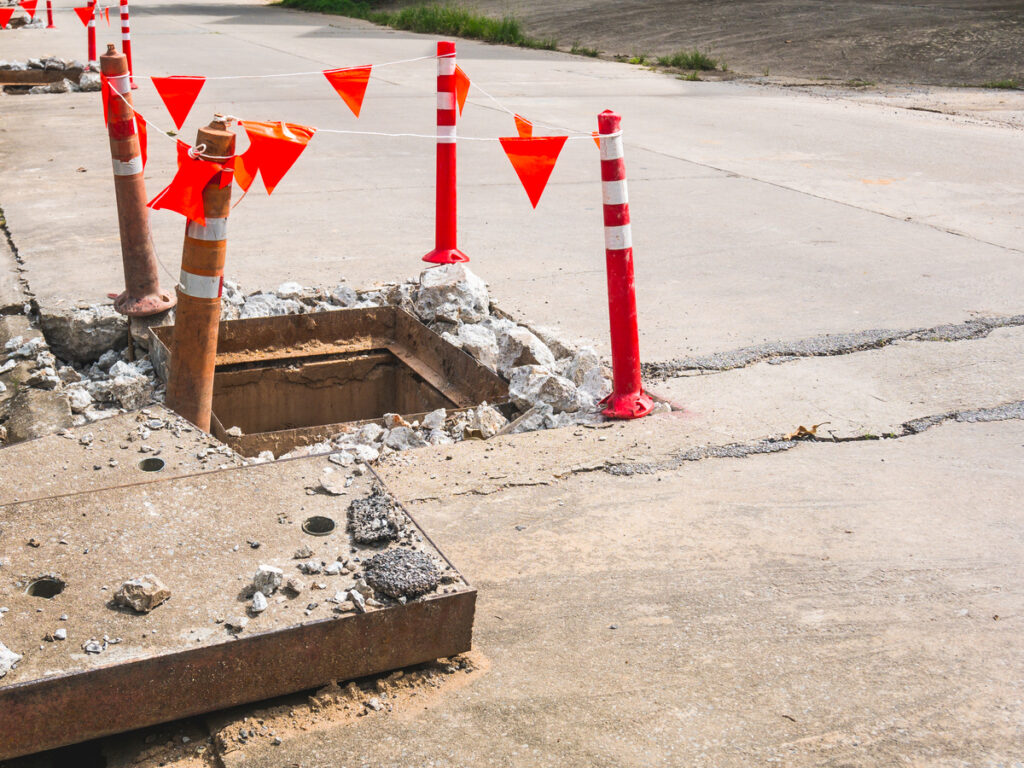
Le signalement de sécurité est très important pour assurer la sécurité des travailleurs et des personnes dans les lieux d'EPI.. De nombreux travailleurs ont des problèmes de durabilité et de visibilité, surtout dans des endroits dangereux. Une faible résistance à la traction et une usure rapide peuvent rendre les choses dangereuses. De nouvelles données montrent à quel point un meilleur signalement de sécurité peut aider:
- UN 2017 Selon une étude du Missouri DOT 78% des conducteurs aiment les dispositifs de signalement automatisés.
- Dans 2021, plus que 900 des gens sont morts et 42,000 a été blessé lors d'accidents dans une zone de travail.
- Les décès dans les zones de travail ont augmenté 63% depuis 2010.
Fort, longue durée, et des solutions faciles à voir sont toujours nécessaires pour les chantiers de construction, événements, contrôle du trafic, et zones d'urgence.
À OPTRAFIC, Nous offrons marquage de sécurité de haute qualité conçu pour résister aux environnements difficiles. Nos drapeaux sont fabriqués à partir de matériaux durables qui offrent une forte résistance à la traction et à l'usure., assurer la visibilité et la sécurité des travailleurs dans les zones de construction, zones de travail sur la route, et lieux à fort trafic. Si vous avez besoin marquage réfléchissant pour des conditions de faible luminosité ou Matériaux résistants aux intempéries pour les climats rigoureux, OPTRAFIC fournit les outils dont vous avez besoin pour maintenir un environnement de travail sûr et sécurisé. Choisir OPTRAFIC pour durable, des solutions de sécurité fiables qui protègent les travailleurs et les piétons.
Principaux à retenir
- Choisissez des matériaux solides comme le polyester et le nylon pour le marquage de sécurité. Ces matériaux ne se déchirent pas facilement. Ils durent plus longtemps dans les endroits difficiles.
- Utilisez des couleurs vives et des motifs réfléchissants pour rendre le marquage facile à voir. Cela aide les travailleurs et les conducteurs à remarquer les signaux d'alarme.. Cela réduit les risques d’accidents.
- Ajoutez une technologie intelligente aux EPI. Les capteurs et les alertes peuvent avertir immédiatement les travailleurs du danger. Cela peut arrêter les blessures.
- Former les travailleurs aux règles de sécurité et à l'utilisation du signalement. La formation aide tout le monde à comprendre pourquoi la sécurité est importante.
- Vérifiez et réparez souvent les équipements de sécurité. Cela détecte les dégâts tôt. Il continue de signaler qu'il fonctionne bien et en toute sécurité.
Applications de marquage de sécurité dans les EPI
Construction et contrôle de la circulation
Chantiers de construction et contrôle de la circulation utiliser des drapeaux de sécurité pour indiquer un danger et aider les gens à savoir où aller. Les travailleurs portent des gilets haute visibilité et d'autres équipements pour rester en sécurité. Le signalement de sécurité doit être fort et durer malgré les intempéries.. Cela aide à empêcher les accidents de se produire. Les bons matériaux empêchent le drapeau de se briser sous le vent ou la pluie. Il est important que le signalement soit facile à voir, surtout à proximité des voitures et des machines. Les équipes choisissent des signalements difficiles et qui durent longtemps pour assurer la sécurité de tous..
Gestion d'événements et de foules
Les personnes qui organisent des événements utilisent des EPI pour contrôler les foules et créer des espaces sûrs.. Des gilets lumineux et des drapeaux de sécurité indiquent aux gens où aller et les maintiennent à l'écart des endroits dangereux.. Les organisateurs choisissent des drapeaux qui ne se déchirent pas et ne se décolorent pas facilement. Cela garantit que cela fonctionne pour tout l'événement. Des équipements et des panneaux clairs aident à mettre fin à la confusion et à assurer la sécurité des personnes. Les travailleurs lors d'événements ont besoin d'un signalement fort et clair pour maintenir l'ordre et protéger tout le monde..
Les travailleurs en EPI disent avoir des problèmes communs:
- Empêcher les blessures de se produire.
- Amener les travailleurs à se soucier de la sécurité.
- Certains travailleurs ne respectent pas les règles.
- S’assurer que les dirigeants soutiennent la sécurité.
Zones d'intervention d'urgence
Les équipes d'urgence utilisent des drapeaux de sécurité pour signaler le danger et aider les personnes à se mettre rapidement en sécurité.. Les drapeaux et les gilets lumineux sont très importants en ces temps. Le tableau ci-dessous montre pourquoi le signalement à haute visibilité est utile en cas d'urgence.:
| Avantage | Description |
|---|---|
| Amélioration de la visibilité | Des vêtements clairs aident les conducteurs à voir les signaleurs et à assurer la sécurité de tous. |
| Sécurité améliorée pour les travailleurs | Les signaleurs aident à protéger les travailleurs en éloignant la circulation du danger. |
| Prévention des accidents | Un bon signalement aide à prévenir les accidents en cas d'urgence. |
Le signalement doit être fort et durer dans les endroits difficiles. Les équipes d'urgence sélectionnent des drapeaux difficiles à briser et qui fonctionnent bien pour assurer la sécurité de tous..
Durabilité et résistance des marquages de sécurité
Choix de matériaux: Polyester, Nylon, Vinyle
Choisir le bon matériau est très important pour le signalement de sécurité dans l'industrie des EPI.. Le polyester et le nylon sont solides et résistants. Ces matériaux aident les drapeaux à rester ensemble et à ne pas se déchirer ou se casser.. Le tableau ci-dessous montre la résistance du polyester et du nylon lorsqu'ils sont secs et mouillés.:
| Matériel | Résistance à la traction (sec) | Résistance à la traction (mouillé) |
|---|---|---|
| Polyester | 55–80 MPa | 50–70 MPa |
| Nylon | 75–95 MPa | 70–90 MPa |
Le nylon est plus résistant que le polyester, donc ça marche bien dans les endroits difficiles. Le polyester ne s'étire pas beaucoup et conserve sa forme longtemps. Le vinyle est utilisé pour les travaux courts, mais il n'est pas aussi résistant que le polyester ou le nylon. Les équipes doivent réfléchir aux besoins de leur site avant de choisir un matériau.
La résistance à la déchirure est également importante pour la durée du marquage.. Le tableau ci-dessous montre les performances du nylon et du polyester en termes de résistance à la déchirure.:
| Matériel | Résistance à la déchirure (chaîne) | Résistance à la déchirure (trame) |
|---|---|---|
| Nylon Oxford 600D | 95 N | 80 N |
| Polyester 600D Oxford | 78 N | 65 N |
Le nylon 600D Oxford ne se déchire pas facilement, donc ça dure plus longtemps dans les endroits très fréquentés. Le polyester 600D Oxford est également bon et fonctionne bien pour de nombreux travaux de sécurité.
Bords et coutures renforcés
Le marquage avec des bords et des coutures solides dure plus longtemps et est plus résistant. Les fabricants utilisent des points doubles et du fil épais pour arrêter l'effilochage et la déchirure.. Ces éléments aident le drapeau à rester solide lorsque le vent souffle ou lorsqu'il frotte contre des outils..
Conseil: Les œillets et œillets renforcés vous aident à installer facilement le drapeau et l'empêchent de se déchirer dans les coins..
Les équipes en construction ou dans les lieux d'urgence comme les drapeaux à bords forts. Cela maintient le marquage en place et garantit que les gens voient les panneaux de sécurité., Même quand le temps est mauvais.
Résistance aux intempéries et à l'abrasion
Le marquage de sécurité à l'extérieur fait face au soleil, pluie, vent, et frotter. Le bon matériau doit lutter contre ces choses pour continuer à bien fonctionner. Le tableau ci-dessous montre comment les différents matériaux résistent aux intempéries et au frottement., et combien de temps ils durent dehors:
| Matériel | Résistance aux intempéries | Résistance à l'abrasion | Durée de vie dans les environnements extérieurs |
|---|---|---|---|
| Polyester léger | Pas très fort, se déchire facilement | Pas bon pour les endroits difficiles | Durée de vie courte, idéal pour les travaux rapides |
| 210DPolyester | Tient bien dehors | Reste fort | Durée de vie moyenne, bon pour de nombreuses utilisations |
| 420DPolyester | Difficile de déchirer, résiste au vent fort | Très dur | Longue vie, bon pour beaucoup d'utilisation |
| Polyester haute résistance | Conçu pour une utilisation prolongée en extérieur | Gère beaucoup de force | Très longue durée de vie, Bon pour les endroits difficiles |
| Nylon | Peut s'estomper au soleil à moins d'être traité | Les larmes sont plus faciles | Durée de vie moyenne, bon pour les endroits près de l'eau |
Le polyester haute résistance est idéal pour les intempéries et une utilisation intensive.. Le nylon fonctionne bien près de l'eau mais peut se décolorer sous un soleil intense s'il n'est pas traité.. Les équipes doivent choisir le matériau adapté à leur météo pour que le drapeau reste facile à voir et fonctionne bien..
Si le drapeau ne se déchire pas ou ne s'use pas, il continue de signaler le danger et aide à guider les personnes en toute sécurité. Un bon signalement réduit les risques d'accidents et aide les équipements de protection individuelle à mieux fonctionner sur le terrain..
Maximiser la visibilité des indicateurs de sécurité
Conceptions réfléchissantes et à contraste élevé
Les designs réfléchissants et contrastés contribuent à assurer la sécurité des travailleurs et des personnes.. Ces conceptions rendent les signaux de sécurité faciles à voir de loin. Ils fonctionnent bien dans la pénombre ou la nuit. Les bandes réfléchissantes renvoient la lumière aux conducteurs et aux travailleurs. Cela fait ressortir davantage le signalement. Les couleurs vives comme le blanc et l’orange attirent rapidement votre attention.
Le tableau ci-dessous montre comment ces matériaux aident les gens à mieux voir et à réduire les accidents.:
| Source des preuves | Résultats |
|---|---|
| Département des transports et des routes principales du Queensland | Les feuilles rétroréfléchissantes de classe 1W permettent aux gens de voir les panneaux d'en haut 300 mètres la nuit, Pendant la classe 2 les signes ne sont visibles que de 90 mètres. |
| Centre de recherche sur les accidents de l'Université Monash | Les routes avec des panneaux clairs et brillants avaient 25% moins d'accidents que les routes aux panneaux décolorés. |
La technologie réfléchissante ne cesse de s'améliorer. Le nouveau marquage utilise des capteurs et des lumières LED pour être plus facile à voir. Quelques lueurs fanées après avoir absorbé la lumière. Ces nouvelles idées aident les travailleurs à rester en sécurité dans différents endroits.
Couleurs vives et options de rétroéclairage
Les couleurs vives aident les gens à repérer les signaux de sécurité de jour comme de nuit.. Rouge, jaune, et l'orange ressortent dans la plupart des endroits. Couleurs fluorescentes, comme le jaune et le rouge-orange, aider les gens à voir les drapeaux de plus loin.
- Des couleurs vives comme le rouge brillant, jaune, et l'orange aide les gens à voir le drapeau dans la pénombre.
- Le jaune fluorescent est le plus souvent observé, avec un 88% taux de détection.
- Des gilets fluorescents rouge-orange sont visibles depuis 300 mètres, plus loin que les autres couleurs.
Le marquage rétroéclairé ajoute encore plus de visibilité. Lumières LED et les bandes solaires aident le drapeau à apparaître dans les endroits sombres ou brumeux. Les drapeaux qui brillent dans le noir utilisent des matériaux spéciaux qui absorbent la lumière du soleil ou la lumière d'une lampe.. Certains marquages changent de couleur en fonction de la lumière qui les entoure. Cela aide les travailleurs à voir les drapeaux sous différents éclairages..
Conseil: Choisissez des marquages aux couleurs vives et aux fonctionnalités rétroéclairées pour obtenir les meilleurs résultats dans tous les types de lumière..
Performance de jour et de nuit
Le signalement de sécurité doit fonctionner correctement de jour comme de nuit.. La lumière du soleil peut rendre les couleurs fanées difficiles à voir pendant la journée. La nuit, les lumières des voitures et les lampadaires peuvent provoquer des éblouissements ou des ombres. Un marquage avec des couleurs vives et des bandes réfléchissantes aide à résoudre ces problèmes.
Le mauvais temps et le mauvais éclairage rendent difficile la visibilité des drapeaux.. Neige, brouillard, et les journées courtes font qu'il est difficile pour les conducteurs de repérer les signaleurs et les panneaux.. Le tableau ci-dessous répertorie les problèmes courants et ce qu'ils font:
| Défi | Description |
|---|---|
| Visibilité réduite | Pluie, brume, ou le brouillard peut masquer les marquages routiers et les panneaux de signalisation. |
| Conditions glissantes | Les signaleurs peuvent glisser et tomber plus facilement sur un sol mouillé. |
Les travailleurs ont besoin d'EPI et de vêtements d'extérieur haute visibilité pour rester en sécurité dans ces endroits difficiles. Le marquage qui combat les intempéries et les frottements reste facile à voir et fonctionne bien.. Les équipes utilisant de nouveaux matériaux et technologies assurent la sécurité des travailleurs, même quand les conditions sont difficiles.
Améliorer les performances des EPI grâce au marquage intelligent
Intégration avec la technologie portable
Les gilets et casques de sécurité intelligents utilisent des capteurs pour assurer la sécurité des travailleurs. Ces capteurs peuvent détecter les chutes ou les mouvements brusques. Ils remarquent également des endroits dangereux. Les appareils envoient immédiatement des alertes aux travailleurs et aux patrons. Cela aide à arrêter les blessures avant qu'elles ne surviennent.
Sur un grand chantier, un capteur de casque a senti une inclinaison rapide. Cela a envoyé un buzz au travailleur. Le travailleur a réparé son équilibre et n'est pas tombé. Cela montre comment la technologie portable et les signaux de sécurité fonctionnent ensemble pour assurer la sécurité des personnes..
- Les alertes envoyées en temps réel aident à prévenir les accidents.
- Les avertissements peuvent détecter des risques pour la santé comme le stress thermique ou la fatigue.
- Des appareils comme le Triax Spot-r Clip et les casques intelligents surveillent les dangers et envoient des alertes.
Ces outils rendent les EPI plus solides et plus sûrs en ajoutant une protection supplémentaire.
Innovations LED et capteurs
Les lumières LED et les capteurs des signaux de sécurité aident les gens à mieux voir. LED lumineuses et les bandes brillantes rendent le marquage facile à repérer de jour comme de nuit.. Les capteurs peuvent ressentir des impacts ou des changements et envoyer des alertes aux équipes d'urgence.
- La police de la vallée d'Oro a utilisé de nouveaux outils et résolu les incidents 32% plus rapide.
- Les systèmes IoT dotés de capteurs et de GPS peuvent avertir les autorités après un crash. Les tests ont montré que les équipes ont répondu 35% plus rapide.
Ces nouvelles idées aident à arrêter les accidents et permettent aux équipes d'agir rapidement. Ils continuent également à marquer fort et sont faciles à voir dans les endroits difficiles..
Personnalisation et image de marque
Les entreprises peuvent modifier les indicateurs de sécurité pour les adapter à leur marque ou à leur site.. Couleurs spéciales, logos, et les messages aident les gens à connaître les zones et les règles. Cela rend la sécurité claire et facile à suivre.
Les EPI intelligents peuvent vérifier l'équipement et effectuer la maintenance par lui-même. Cela permet de respecter les règles de sécurité et de réduire le temps perdu. Plus de cinq ans, l'utilisation du signalement et de l'équipement intelligents peut permettre d'économiser jusqu'à $660,000 et redonner plus que 100% sur l'investissement.
Smart PPE construit un système qui s'adapte aux travailleurs et les rend plus à l'aise.
Avec une technologie intelligente, gilets lumineux, et des matériaux difficiles, les équipes peuvent rendre les EPI plus sûrs et mieux travailler partout.
Choisir le bon marquage de sécurité pour les EPI
Sélection des matériaux et du design
Choisir le bon matériau pour le signalement de sécurité contribue à assurer la sécurité des personnes. Le polyester et le nylon sont solides et ne se déchirent pas facilement. Ces matériaux fonctionnent bien sur les chantiers de construction et en cas d'urgence. Le vinyle convient aux travaux de courte durée mais ne dure pas longtemps. Les équipes doivent utiliser des drapeaux avec des bords solides et des points doubles.. Cela aide le drapeau à rester ensemble dans le vent et lorsqu'il est beaucoup utilisé.. Des gilets lumineux et des drapeaux colorés rendent les travailleurs faciles à voir. Les bandes réfléchissantes aident les gens à voir les drapeaux lorsqu'il fait sombre. L'équipement doit être adapté aux dangers de chaque site. Il est important de choisir des matériaux capables de résister aux intempéries et à une utilisation intensive..
Recommandations spécifiques aux applications
Différents endroits nécessitent différents types de signalisation de sécurité. Les chantiers de construction ont besoin de drapeaux qui ne se déchirent pas et qui résistent au vent.. Les travailleurs doivent porter des gilets lumineux pour rester en sécurité. Les gestionnaires d’événements devraient choisir un signalement léger, fort, et facile à repérer dans la foule. Les zones d'urgence ont besoin d'un drapeau très brillant et difficile à déchirer.. De bons panneaux et des signaleurs formés contribuent à assurer la sécurité de tous. Les programmes de formation tels que la formation à la sécurité d'AWP Safety et la formation ATSSA Flagger enseignent aux travailleurs comment utiliser l'équipement et rester en sécurité..
| Programme de formation | Description |
|---|---|
| Formation à la sécurité d'AWP Safety | Sensibilise les travailleurs à la sécurité |
| Formation des signaleurs de l'ATSSA | Montre aux signaleurs comment faire leur travail |
| Formation de sécurité requise par l'OSHA | Formation OSHA sur les règles de sécurité |
| PREMIERS SECOURS & Formation en RCR | Enseigne les premiers secours et la RCR en cas d'urgence |
Normes et conformité de l'industrie
Le respect des règles de sécurité est très important pour les travailleurs en EPI. OSHA et l'ANSI établissent des règles sur la façon dont les équipements doivent être fabriqués et utilisés. Ces règles aident à protéger les travailleurs du danger. Les équipes doivent choisir les bons gilets et drapeaux pour chaque tâche. Expert Safety Services et DNOW donnent des conseils et vendent du matériel qui répond à ces règles. Les applications mobiles et les cours de sécurité aident les équipes à suivre les règles de sécurité et à travailler en toute sécurité.
| Standard | Description | Impact sur la sélection des produits |
|---|---|---|
| OSHA | S'assure que les EPI sont sécuritaires pour le travail | Aide les équipes à choisir le bon équipement |
| Ansi | Établit des règles sur la façon dont les EPI sont fabriqués et utilisés | Indique aux équipes quel équipement utiliser pour chaque tâche |
Conseil: Vérifiez souvent les règles de sécurité et demandez de l'aide à des experts pour rester en sécurité et respecter les règles..
Un signalement de sécurité solide et facile à voir aide à prévenir les accidents. Les équipes EPI sélectionnent des matériaux qui durent longtemps et sont résistants. Le tableau ci-dessous présente les règles et normes qui contribuent à assurer la sécurité des lieux.:
| Type de preuve | Description |
|---|---|
| Vêtements de sécurité haute visibilité | Les règles stipulent que les travailleurs doivent porter des vêtements de sécurité à haute visibilité pour être vus dans les endroits dangereux. |
| ANSI / ISES 107-1999 Standard | Cette règle indique comment confectionner les vêtements de sécurité, comme la quantité de matériau brillant nécessaire pour que les travailleurs puissent être vus sous différents éclairages. |
La formation et la vérification du lieu de travail aident souvent les équipes à utiliser le signalement de la bonne manière. Les bonnes étapes incluent:
- Vérifiez le lieu de travail pour détecter les endroits dangereux et les infractions aux règles..
- Utilisez les nouveaux indicateurs lentement pour que le travail ne s'arrête pas et que les gens voient à quel point cela aide.
- Enseigner aux travailleurs et les aider à apprendre la sécurité pour rendre la sécurité importante.
De nouveaux matériaux et des outils intelligents rendent le signalement plus solide et plus confortable. Le tableau ci-dessous montre les nouveautés:
| S'orienter | Description |
|---|---|
| Matériaux innovants | Les tissus contenant du graphène et des plastiques spéciaux protègent mieux et sont plus légers. |
| Conceptions ergonomiques | De meilleures formes et ajustements rendent l'équipement plus confortable et aident les travailleurs à faire leur travail. |
| Technologies intelligentes | Les capteurs des EPI surveillent le danger et contribuent à assurer la sécurité des travailleurs. |
Les équipes qui forment les travailleurs et utilisent un meilleur signalement rendent le travail plus sûr et réduisent les blessures..
FAQ
Quels matériaux fonctionnent le mieux pour le marquage de sécurité dans une zone de construction?
Les équipes choisissent le polyester ou le nylon pour le marquage de sécurité. Ces matériaux ne se déchirent pas facilement et durent longtemps. Ils aident les travailleurs à rester en sécurité et faciles à voir pendant le travail.
Comment les normes de sécurité affectent-elles le choix des équipements de protection individuelle?
Les normes de sécurité aident les équipes à choisir le bon équipement. Ces règles garantissent que les gilets, casque, et les lunettes protègent bien. Ils aident également les travailleurs à être mieux vus.
Pourquoi une haute visibilité est-elle importante pour un équipement de protection de qualité supérieure?
La haute visibilité permet aux travailleurs de se démarquer dans les endroits très fréquentés. Un bon équipement de protection utilise des couleurs vives et des bandes brillantes. Cela aide à arrêter les accidents et à assurer la sécurité de tous.
Les lunettes et les casques peuvent-ils être utilisés avec des drapeaux de sécurité ??
Les travailleurs utilisent des lunettes et des casques avec des drapeaux de sécurité. Cela protège les yeux et la tête du danger. Il aide également les équipes à respecter les règles de sécurité au travail.
Comment les équipes devraient-elles entretenir leurs lunettes de sécurité pour une utilisation à long terme?
Les équipes doivent nettoyer les lunettes après chaque utilisation. Ils doivent les conserver dans un endroit sec. Vérifier les lunettes permet souvent de détecter rapidement les dommages. Cela permet aux lunettes de rester en sécurité et de bien fonctionner.

